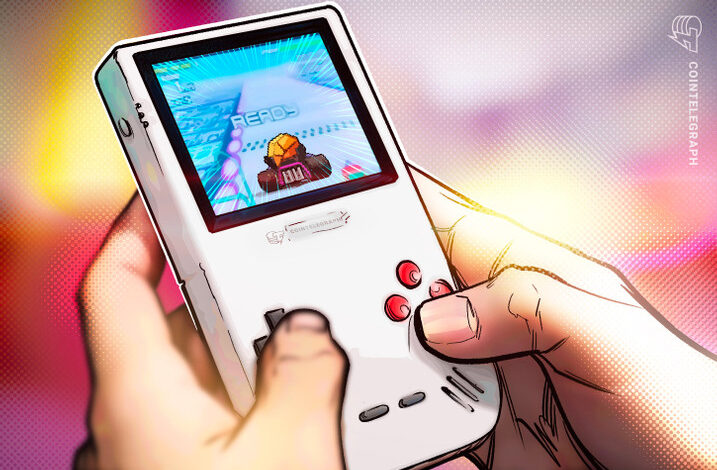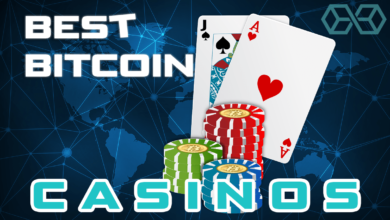The Rise Of Mobile Gaming Shared A Lot In Common With Crypto Gaming

Mobile gaming had many skeptics during its early days, but today it dominates 60% of the gaming market. Crypto games are following a similar path.
Mobile gaming has become a significant pillar of the interactive entertainment industry over the last decade. Users worldwide now have access to smartphones, bringing them into the realm of serious gaming. With the advent of blockchain technology, a paradigm change is occurring, allowing players to create real value from gaming time and owning the items they acquire in-game.
This has a lot of potential, but now, most initiatives fall short of their historical equivalents. Many now have doubts about the ability of this new generation of video games to capture widespread interest. However, this can be a mistake. Indeed, this is only one time a new technology has been disregarded because of its crudest use.
Blockchain Gaming’s Growing Pains
Web3 games use decentralized blockchain components, such as smart contracts and non-fungible tokens (NFTs), to build virtual goods that users can independently verify they own and sell without the help of a third party. With this innovation, players regain a significant amount of control. Despite this, the crypto gaming industry is still young, and many early games have been criticized for being extremely basic and similar to other games in the genre rather than providing fresh or engaging gameplay.
Because of the apparent shallowness and overemphasis on money, many self-described gamers are reluctant to engage with NFT games. These “play-to-earn” (P2E) products allow users to acquire actual value from cryptocurrencies and NFTs, which can later be exchanged for fiat money. Axie Infinity is one of the most well-known examples of a P2E game. It gained notoriety when it started providing a significant source of income for many people worldwide during the COVID-19 pandemic. However, it eventually stopped being profitable as bear market conditions set in and earnings potential plummeted.
Cointelegraph Innovation Circle member Tomer Nuni offers five ways to build a successful play-and-earn game.
A play-and-earn model, by contrast, focuses first on developing a game users want to play and then the money making component. Play-and-earn game developers aren’t concerned with racking up huge earnings and user numbers as quickly as possible. Instead, they concentrate on long-term goals, like building community, making ongoing game improvements and creating a stable token economy.
Sadly, this is the situation with a lot of comparable Web3 games. Many Web3 games have been unable to energize their fan bases in the absence of their formerly lucrative cash windfalls because they needed to be designed to withstand time or significant economic shocks. Because of this, many opponents of the blockchain gaming genre believe that the currently available game represents the pinnacle of what is conceivable. As a result, the industry is viewed as a fad. Looking back at recent history, particularly the meteoric ascent of mobile gaming shows that early goods shouldn’t limit the possibility of the future. The
The Mobile Gaming Parallel
It would be similar to the situation if you looked at mobile games in 2005. The titles were highly straightforward, frequently difficult to manage, and needed graphics. When Nokia adapted the iconic game Snake to its range of mobile phones, it was one of the most well-liked early mobile games, with millions of players worldwide. At that time, anyone who played games on their phone could only be considered a casual gamer, and a similar narrative evolved to what we see today.
Many people viewed mobile gaming as a curiosity for casual players who would never be able to compete with the options offered on consoles and desktop computers. Today’s top video games, such as Fortnite and Arena of Valor, are incredibly well-liked by ardent players and have even impacted the more significant gaming business. Nowadays, no one would argue that mobile gaming is inferior to older options because technology has advanced to make the distinctions less critical.
Mobile will control 60% of the game market by 2022. Today, it dominates the gaming industry on a global scale. Traditional gaming platforms still exist and function effectively, but mobile has demonstrated how new technology can completely alter the narrative of an industry when it matures. The snake didn’t specify what mobile would evolve into, which drove the message home.
The Future Of Crypto Gaming
Whatever your opinion of the strategy and popularity of P2E games, it’s evident that this statistic shouldn’t be used to assess the long-term viability of Web3 gaming. There are already upcoming game generations that will challenge classics. Notably, the industry recognizes that games must go beyond cash rewards and create fascinating gameplay to attract and retain players. Some of these games still feature P2E elements, and others use NFTs.
Web3, P2E, and blockchain gaming are different, although many use them interchangeably. These branches may become even more distinct and give rise to new subcategories of how this technology is used in the upcoming years. A failure to recognize the diversity that has evolved in the mobile market results from assuming that all future offerings would be identical.
What happens to Web3 will only become apparent with time, so those betting against it should reconsider. There are numerous similarities between what we see now and how mobile gaming developed. It remains to be seen whether “killer apps” will make the scene more accessible to a broader audience, but in ten years, these kinds of games will likely merely coexist with their home console and smartphone counterparts.
Immutable Games Studio’s principal studio officer is Justin Hulog. He previously worked for Riot Games on popular games like League of Legends, Valorant, and Wild Rift. Justin earned a degree in comparative literature from Columbia University.




